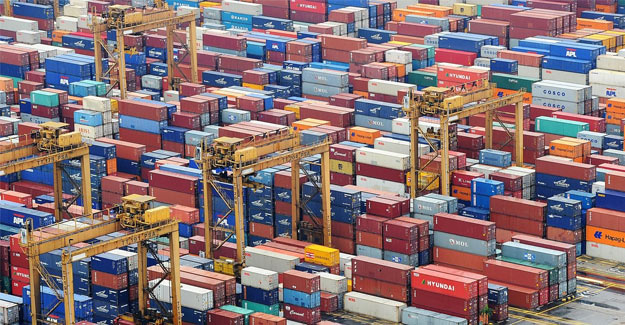Strong Domestic Demand And Exports To Keep Outlook Stable For Cotton, Synthetic Textiles
Strong Domestic Demand And Exports To Keep Outlook Stable For Cotton, Synthetic Textiles

India Ratings and Research (Ind-Ra) has maintained a stable outlook for cotton and synthetic textiles for the remaining FY2019 period, in view of strong domestic demand from end-user segments and a rise in exports. The rise in exports is supported by the depreciation of the Indian rupee against the US dollar.
"The domestic demand for textiles is likely to remain robust from end-user segments, supported by a strong rise in private consumption expenditure during the rest of FY2019. Also, textile exports are likely to rise, with apparel exporters benefitting from the depreciation of the Indian rupee against the US dollar. The Indian rupee depreciated at a higher rate against the US dollar over April-August 2018 than the currencies of key apparel-exporting nations," says the Ind-Ra report.
The recent textile exports numbers by Ministry of Commerce & Industry have also stated that the situation is improving. The exports of textile and apparel stood at Rs 21,895 crore during August 2018 as compared to Rs 18,533 crore during August 2017 showing an increase of 18 per cent. Similarly, the cumulative figures stood at Rs 1,01,727 crore during April-August 2018 as compared to Rs 95,888 crore during April-August 2017, showing an increase of 6 per cent.
Ind-Ra expects the overall credit profile of the textile sector to gradually improve, as expected by the agency in February 2018. The sector profitability is likely to improve gradually, with players passing on increased raw material prices to end-users, given the healthy demand, a depreciating rupee and waning impact of the structural issues. However, the positive impact of improved demand and profitability will be partly countered by sticky working capital requirements on the back of cost inflation and, thus, a steady reliance on debt.
The agency of the view that a lower-than-expected cotton production in 2017-2018 and a further decline in production in 2018-2019 due to a lower acreage, along with high domestic consumption demand and high export demand from China, would further erode the domestic cotton stock levels. "An expected decline in the stock levels, along with a likely rise in minimum support price for the cotton season 2018-2019, would keep cotton prices elevated," adds the report.
Given the healthy domestic demand, margins across the cotton value chain are likely to improve gradually. The gross contribution margin of cotton yarn (30s combed hosiery) remained largely steady at Rs 87.3-93.4 over April-July 2018 (after improving from 2HFY18 levels) despite the rise in cotton prices. Within the cotton value chain, the margins of denim fabric manufacturers would continue to remain under pressure due to a 15-20 per cent capacity under utilisation.
The Ind-Ra report is of the view that the improvement in cotton less polyester staple fibre price spread is likely to result in volume growth of synthetic textiles and support the profitability of the synthetic value chain. Also, the government of India's decision to allow input credit on man-made fabric equivalent to 7 per cent of fabric price would lead to a decline in input prices for apparel manufacturers and, thus, further support their volume growth.
Despite an increase in PSF prices following a rise in crude prices over April-July 2018, cotton less PSF spread expanded to Rs 31.2 per kg in July 2018 from Rs 19.5 per kg in March 2018. The expansion is likely to result in a rise in synthetic textile volume and support profitability, along with a higher headroom to pass on any further increase in prices. "Also, the government's decision to allow input credit on man-made fabric equivalent to 7 per cent of fabric price, would result in a uniform effective tax rate across the synthetic value chain, thereby leading to lower-than-existing input prices for apparel manufacturers and supporting their volume growth," adds the report.



 textileexcellence
textileexcellence 







